Summary
- It was revealed in September 2024 that Bhutan’s government was the world’s fifth-largest holder of Bitcoin, totalling 13,000 Bitcoin, worth more than $780 million.
- The authorities have been quietly developing a large-scale Bitcoin mining operation, seemingly using it as a strategic currency reserve.
- This appears to be part of a wider strategy to pursue digital assets, with the authorities providing the population with education in this area – 91% of those surveyed for an academic study showed knowledge of crypto.
- More crypto in action stories can be found here.
What is Bhutan’s Bitcoin asset hoard?
Bhutan’s authorities have amassed more than $780 million in Bitcoin as a result of mining operations that began in 2019. This amount represents almost 27% of its GDP.
This activity has largely remained undetected, but came to light when data analytics firm Arkham Intelligence traced a digital wallet back to the government.
Reports suggest that one to five Bitcoin are mined daily by the state-owned Druk Holding & Investments (DHI), with much of what is mined, held in a strategic reserve. Sales only appear to take place when funds are required, and are made on the Kraken exchange.
According to the World Bank, Bhutan began Bitcoin mining to diversify its income sources. It is heavily reliant on tourism, the revenues it makes from selling the surplus electricity generated from hydropower, and agriculture. The pandemic underscored the vulnerability of its economic position and accelerated the uptake of cryptocurrency mining.
Bitcoin mining was developed further in 2021, with records showing that Bhutan imported large quantities of computing hardware to support its burgeoning operations. That year, Bhutan is believed to have built its largest mining operation, taking advantage of the existing infrastructure from a defunct education project called Education City in the capital, Thimpu.
Expansion continued. Between July 2021 and June 2023, Bhutan invested almost $500 million in crypto mining facilities.
In 2023, DHI went into partnership with Singapore-based mining company, Bitdeer, announcing a $500 million green crypto fund, again leveraging the country’s immense renewable energy sources. To date, Bhutan has five crypto mining centres, with work on a sixth starting during the first quarter of 2024.
It is believed that the authorities also invest in digital assets; in 2021, court documents that became public during the bankruptcy proceedings of two crypto lenders revealed that DHI had been a customer.
Is crypto legal in Bhutan?
No. Cryptocurrencies are not considered legal tender, and the authorities advise against undertaking any transactions using cryptocurrencies, warning that these are carried out at the risk of those involved.
There is, however, interest among the population – particularly younger members – in cryptocurrencies.
The banking infrastructure is underdeveloped in Bhutan and as such, the inclusive nature of crypto is appealing. Reports suggest growing numbers are involved in mining the lesser-known Pi cryptocurrency because it can be mined on a phone, and they presumably hope at some point it could be legalized.
The authorities set up a regulatory sandbox for crypto mining in 2019. The framework lays out conditions and specifications, including customer identification and protection, KYC, and forms of approval from the monetary authority.
Its objectives are to ensure that cryptocurrency mining strictly complies with the country’s relevant laws, to regulate and supervise cryptocurrency mining and trading activities ensuring they pose no risk to the financial system, ensure the appropriate safeguards are in place to protect investors and consumers, and introduce regulatory reforms to support disruptive technologies innovatively.
There is no information about crypto adoption, but an academic report revealed a population that is unusually well informed about crypto, with more than 90% of those involved in the survey aware of cryptocurrencies.
What is the government’s attitude towards crypto?
Caution and a lack of regulation are the defining features of the government’s attitude, but in essence, it’s difficult to tell because the authorities have said very little and instead can only be judged on their actions.
The authorities have not regulated the sector, and yet show considerable interest in developing digital assets as both a revenue stream and to boost financial inclusion.
Bitcoin mining expansion reveals an interest – and need – to diversify revenue streams. Bhutan is one of only a handful of countries that is using Bitcoin as a strategic reserve. The only other country that has been mining the cryptocurrency with this intent is El Salvador, the rest – China, the UK, Ukraine and the US – have a reserve comprising seized assets.
The government also appears to be using the profits from mining to meet specific expenses. For example, in 2023, it used the proceeds from sales to fund an INR 4 billion ($47.8 million) increase in public-sector wages, which it appears it would otherwise have found difficult to meet.
There are signs that the authorities are interested in greater digital inclusion. In September 2021, the Royal Monetary Authority (RMA) announced its partnership with payment firm, Ripple, to pilot a central bank digital currency. At the time, the RMA said that the pilot was designed to support the adoption of digital payments and with this, the central bank in its moves to increase financial inclusion to 85% by 2023.
In reality, this looks to be taking longer than planned. A two-year pilot got under way in 2024, following three other phases – a needs assessment, design and scoping, and technical design and proof of concept.
But inclusion work continues in other areas. In 2023, the authorities launched a decentralized digital app – Self-Sovereign Identity (SSI) – which allows individuals to handle and share their personal information without being dependent on a centralized authority.
It counters the problem of data breaches and privacy issues, but users need to be educated in how it works and how to deal with regulatory frameworks.
Perhaps with this in mind, the government invests in public education about the sector. A 2023 study revealed that 91% of respondents were aware of cryptocurrencies, demonstrated a positive attitude towards them (5.024 out of 7) and intended to use them (5.244 out of 7) if they became available.
These developments suggest that the authorities have a broader vision for integrating digital assets and blockchain technology beyond mining.
Timeline of developments
2014 – The RMA warned against the use of cryptocurrencies.
January 2019 – The RMA introduced its Regulatory Sandbox Framework for Mining Cryptocurrency.
2021 – The RMA announced its partnership with payment firm, Ripple, to pilot a central bank digital currency, the Digital Ngultrum.
2021 – Cryptocurrency investments expanded beyond Bitcoin mining.
2021 – Work began on the country’s largest cryptocurrency mining operation at what was Education City.
May 2023 – DHI announced a partnership with Bitdeer, and together they unveiled a green crypto mining fund.
For its part, Bitdeer said it had built a 100MW cryptocurrency mining facility as part of the first phase of its work with the government.
June 2023 – A portion of the government’s Bitcoin holdings was used to fund a 50% civil service salary increase.
April 2024 – Bitdeer said it was working to expand the country’s mining capacity to 600MW in 2025. To put the scale of operations into perspective, this is more energy than the whole of the country uses combined.
Outlook
Bhutan’s quiet approach leaves much unknown, and a tendency to fill in the blanks, possibly incorrectly. Its reticence to publicly state much about its digital asset activities also explains why the country’s cryptocurrency reserves announcement came as such a surprise.
It is a tiny country that receives little international attention that has quietly developed a digital assets portfolio, appearing keen to accelerate the country’s digital transformation as well as diversify its economy. In doing so, it offers an example of the potential for developing nations to use cryptocurrency mining to bolster and diversify their economies.
This comes with some risks. Large-scale infrastructure investment requires funds. One phase has already been concluded with Bitdeer, a second phase has the potential to attract Chinese private investors, something that would sit uncomfortably with domestic and foreign policy.
Imports of crypto mining equipment widened the current account deficit, and while Bitcoin mining is proving financially successful now, the return on any type of investment model can never be assured. That said, hardware imports have subsided and tourism revenue has rebounded, boosting the current account.
There is a sense that Bhutan’s authorities weigh risks carefully. Actions point to the country being set on a path to a digital future, and Bhutan’s rulers look intent on ensuring that their citizens are sufficiently educated, prepared and included in this.

























